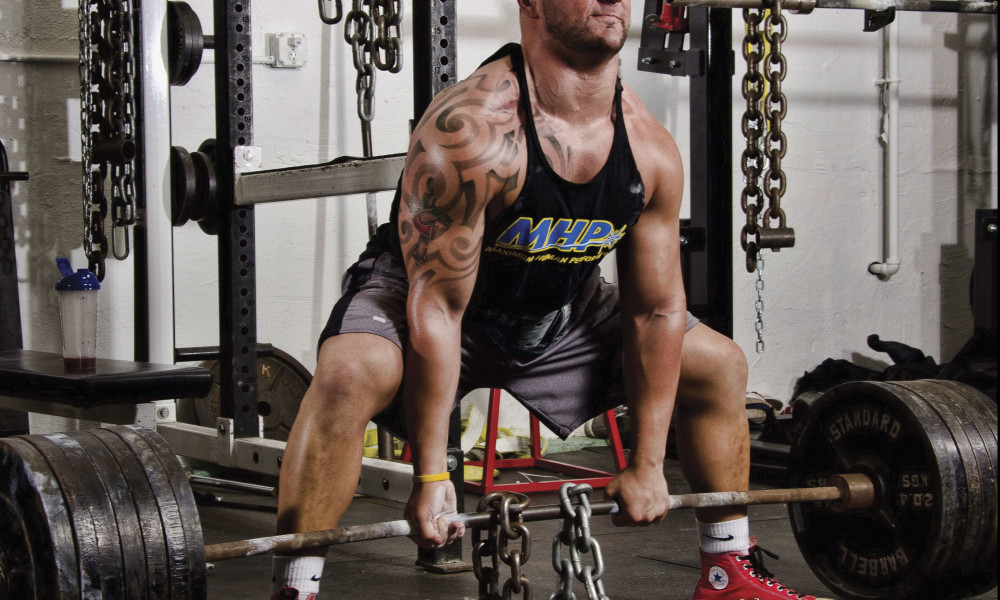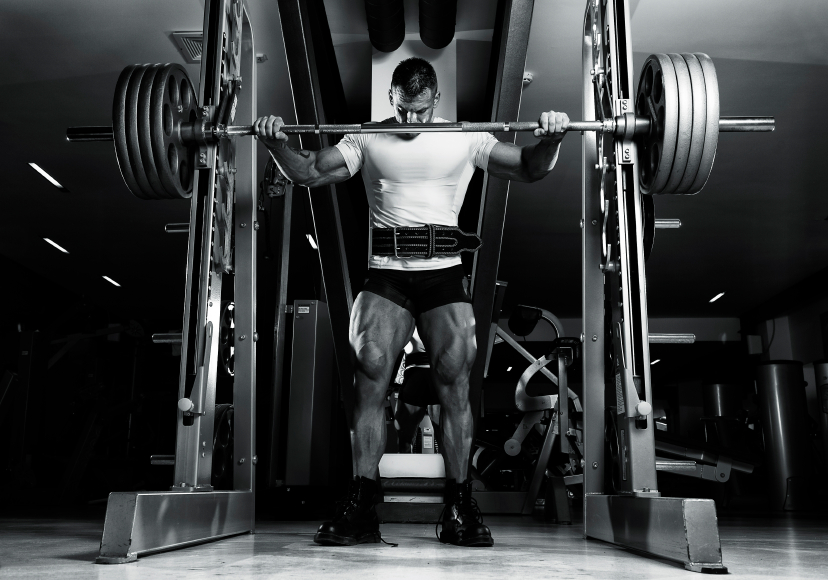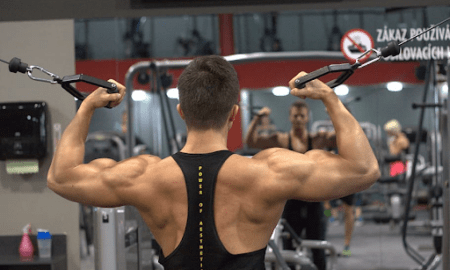

Outside of squatting, there is no other exercise more important to improving functional movement than the deadlift. Not only do deadlifts build a strong back, they also teach you how to pick up heavy stuff without putting your health at risk. Deadlifts need to be looked at as a movement that is crucial to overall life and longevity.
Deadlifts are my favorite lift not simply because of the amount of muscular hypertrophy they demand and developed—they also don’t make me too sore compared to squats. This is due to lack of an eccentric component with deadlifts as compared to the heavy eccentric phase during squats.
The deadlift is considered more “hip-dominant” because you want to sit back as much as possible when pulling. Hip-dominant lifts place more emphasis on the posterior chain (hamstring, glutes, erectors, lats, and traps). If you ever question the effectiveness of deadlifts, take a look at IFBB pro bodybuilder Johnnie Jackson, who has pulled over 800 pounds.
Conventional Deadlifts
Conventional deadlifts are the most common form of this exercise. I usually start people off by telling them to walk up to the bar with their feet hip-width apart and position their shins about an inch away from the bar. Then I tell them to sit their hips back and down, properly engaging the hamstrings. A good cue is to keep your shins as vertical as possible; however, this may be altered due to individual limb lengths. Your back should also be arched during the entire lift, especially the lumbar region. During a deadlift, you want to make sure your hips are as close to the bar as possible, which is measured laterally, not vertically. Understanding this concept will place your shins at a more vertical angle.
I usually cue my lifters to try to “break the bar” around their shins during the setup. This will make sure your lats are properly engaged. If your lats aren’t activated, then your back will round forward and you will lose the bar in front of you. Another essential cue when deadlifting is “pulling the slack out of the bar.” This is accomplished by pulling the bar until you feel it tighten up against the plates. Once you’ve pulled the slack out, you will have the proper tension on the bar needed to actually perform the lift.
The last important objective when deadlifting is finishing the lift with a strong and powerful lockout. I’ve seen numerous people get the bar to their knees and can’t forcefully fire their hips through to lock it out. This is a result of poor glute development. Once that bar passes your knees, a strong lockout is key to finishing your lift.
Sumo Deadlifts
The sumo variation is usually seen in competitive lifters. Most lifters with short legs, long torsos, and short arms favor this variation because they don’t have to work as hard since the bar travels a shorter distance.
The same principles apply to doing sumo deadlifts as to conventional, except your feet are out wide with toes closer to the plates. Angle your feet out and drive your knees out aggressively to allow yourself to sink down between your hips. Once you’re into this position, stand as you would with a conventional pull. In both lifts, drive your knees out to engage your hips and keep them stable.
Stiff-Leg Deadlifts
This variation won’t allow you to pull heavy weight, but it’s a great accessory movement. It places even more of an emphasis on your lower back and hamstrings, so it builds the strength needed to pick up heavier weight.
Despite the name, I never advocate keeping your legs completely straight. This places unneeded stress on your lower back. Instead, keep your knees slightly bent as you push your hips back. This will ensure both your hamstrings and back are splitting up the workload.
Start this lift the same way you would a conventional pull. Once you’re standing tall, unlock your knees slightly and then allow your hips to perform the rest of the movement. One mistake people make is moving at their spine and not their hips. Your spine must stay neutral the whole way through while you push your hips back. It should not bend forward at any time.
Rack Pulls
Rack pulls are partial-range deadlifts and are a great way to teach you to aggressively drive your hips forward when finishing your deadlift. Rack pulls are usually performed with higher reps (four- to eight-rep range) because the range of motion is decreased. Another benefit of rack pulls or partial-range deadlifts is that you can choose where you want to begin your pull. If you place your bar anywhere above the floor, it’s considered a partial-range deadlift.
Deficit Pulls
These are my favorite exercise for building deadlift strength. Deficit deadlifts are performed the same way as a conventional deadlift, but the range of motion is increased by standing on a plate or platform.
Deficit deadlifts really build your strength and speed off the floor. I had an athlete completely replace regular deadlifts with deficit deadlifts; they are usually an accessory exercise used to complement the main lift, but we made them our main lift. Come competition, the weight flew off the floor! Deficit deadlifts should only be done once you master traditional pulling, because the setup for these is more difficult and requires the appropriate mobility.
Reps And Frequency
How heavy and how often you deadlift depend on your goals. I tend to program deadlifts once a week for my clients. However, there are times I will call for deadlifts twice a week with one day focusing on max strength and another day focusing on speed of the movement.
I start off my athletes doing a basic 5×5 rep scheme for either sumo or conventional pulls. Once you build strength and start to plateau, proceed to more aggressive sets of one to three reps with between 85 and 95 percent of your one-rep max. Then, based off where you are weak, pick your accessory lifts such as stiff-leg deadlifts or partial-range deadlifts. With these exercises, you can get away with higher-rep sets working between eight and 15 reps.
If you train for aesthetics, program deadlifts on either your back day or hamstrings day. Deadlifts target the back tremendously, so there would be no argument if you choose to place them on your back day. Train them with heavy sets, working between one and five reps. And then for your volume sets on back day, you can do rows, pull-ups, or pull-downs. IM






















You must be logged in to post a comment Login